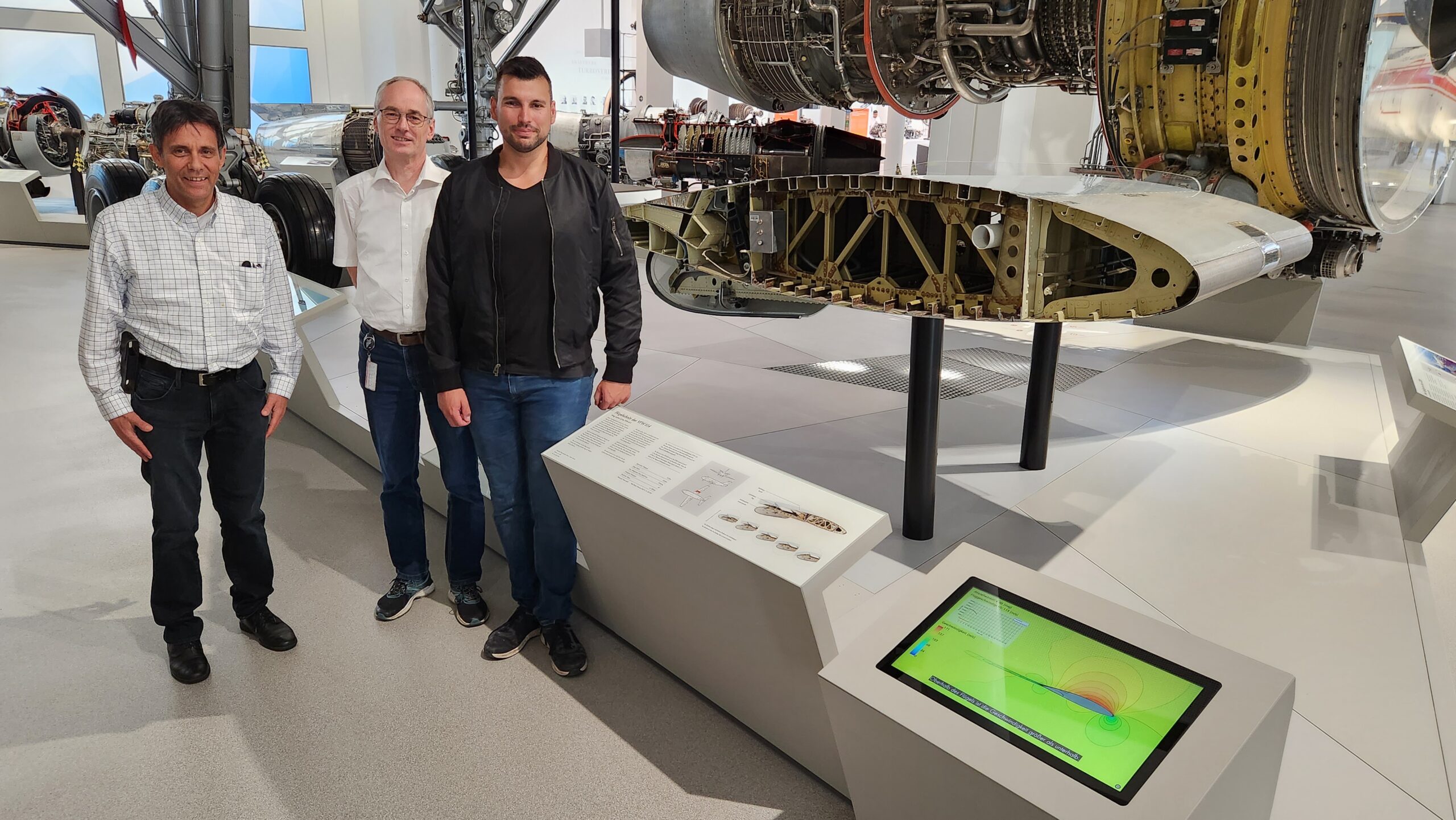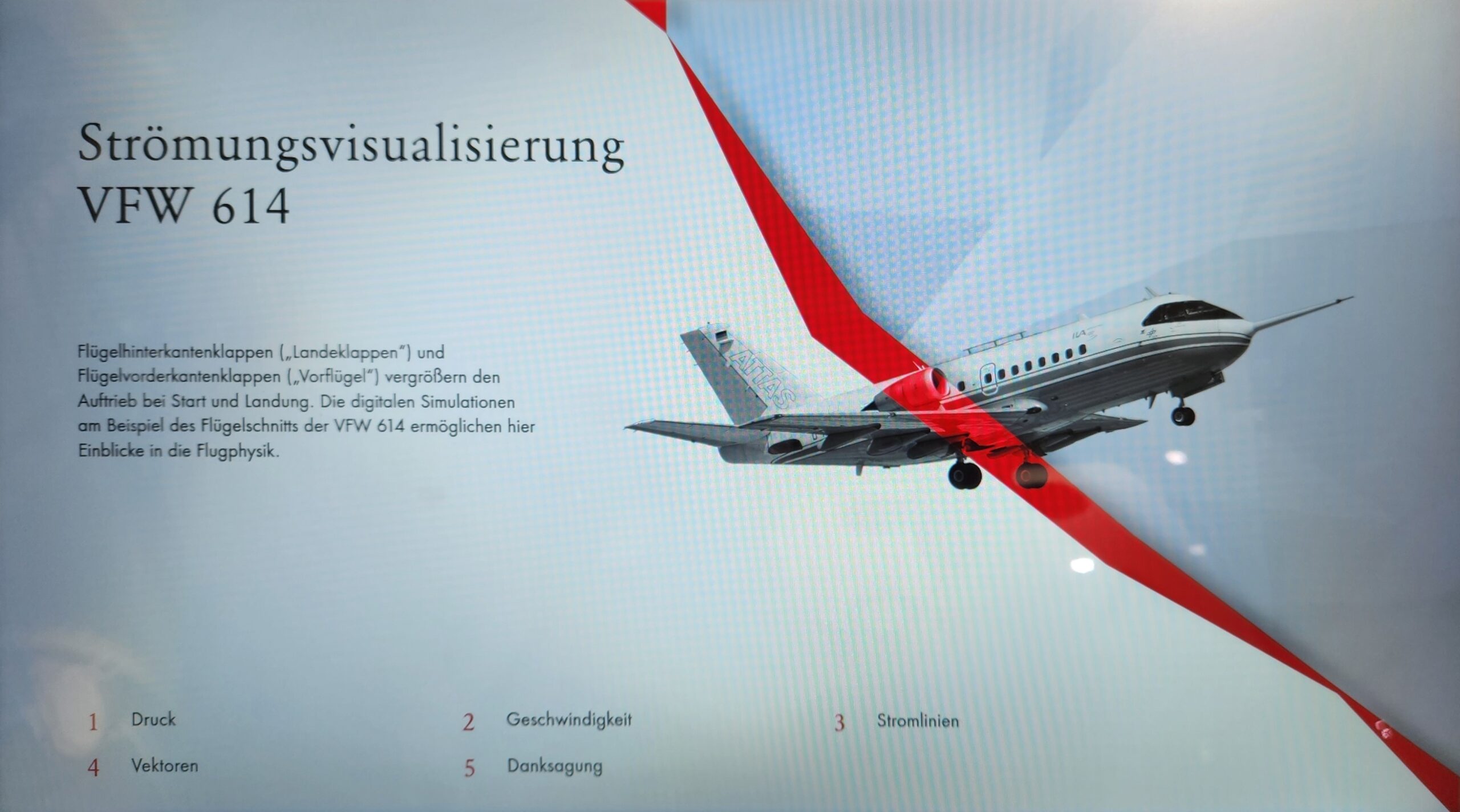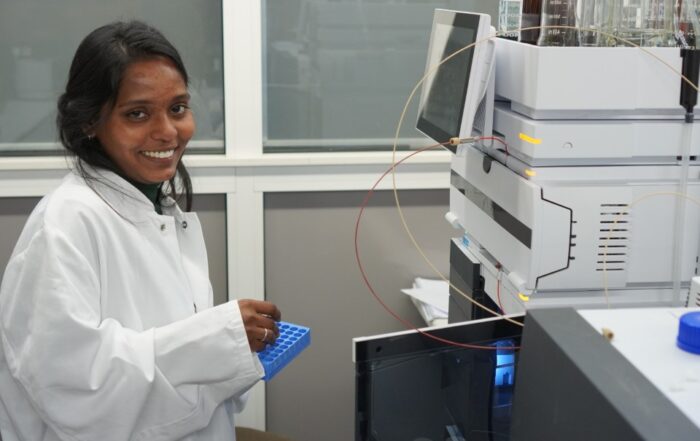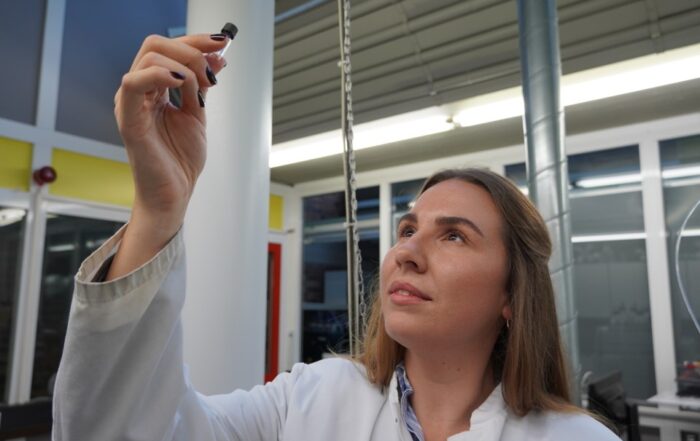19. July '24
Andreas T. Wolf
A piece of Coburg University of Applied Sciences is now also in Munich: Two scientists have even measured the wing of an iconic aircraft and created a simulation for a media station in the Deutsches Museum.
This is now a permanent part of the exhibition. Who hasn’t held their hand out of a moving car to feel the wind on their outstretched fingers?
Visitors to the Deutsches Museum in Munich can find out what such an airflow looks like on a real aircraft wing, visualized with all the technical details.
The exhibition on modern aviation now features a media station on which Prof. Dr. Philipp Epple and his research assistant Dr. Michael Steppert have worked.
It shows the simulation of a landing approach and how the air around the wing behaves.
Practical knowledge for the vacation flight
Fluid mechanics and turbomachinery are Prof. Epple’s areas of expertise at the Faculty of Mechanical and Automotive Engineering.
He has long maintained good contact with the Deutsches Museum and when the “Modern Aviation” exhibition was due to be restructured, it was clear that he could help.
Today, the flow simulation is an integral part of the exhibition.
Dr. Robert Kluge, curator for aviation after 1945 at the Deutsches Museum, expresses his thanks for the close cooperation: “Prof. Epple and Dr. Steppert really helped a lot in various didactically complex areas of the new permanent exhibition. Hundreds of visitors can now use this media station every day to gain their own impression of the mechanics of flight and the functioning of aircraft components, which they may observe from the cabin window as they approach their vacation destination.”
Famous grand piano
On display is the wing section of a VFW 614, one of the first passenger aircraft developed in Germany after the Second World War, which had two jet engines.
The focus is on the change in airflow when decelerating and extending various landing flaps: “Here, the functionality of an aerofoil with landing flap and spoiler could be explained using a complex numerical flow simulation during the landing approach and the flow visualized,” explains Prof. Epple.
For this purpose, special recordings of the wing geometry were made at the Flugwerft Schleißheim, as the Deutsches Museum had neither a computer-aided design (CAD) nor a drawing.
In addition to the shape, detailed images were also required, such as the path movement of the landing flaps and the air brake.
In Coburg, a CAD model could then be created from the data, which served as the basis for a CFD simulation, says Epple: “As a result, it was possible to simulate the landing process of the corresponding wing section of the VFW 614 in the German Museum in the flow simulation. Using the wing section on display, all stages of the landing approach can be followed in terms of the position of the landing flap and air brake. At the same time, visitors can see the changes in the airflow at every stage of the landing approach.”
Coburg expertise in Munich
The visualization of the streamlines also helps to understand in detail the speeds and pressure distribution parallel to the extension of the landing flaps and the spoiler on the flared wing section, and the generated lift and drag are also shown in additional graphics.
The corresponding data for the landing approach of a VFW 614 was taken from the flight manual, allowing the landing simulation to be reproduced very accurately.
The Coburg scientists are proud to see the fruits of their work on display in one of Germany’s most renowned museums: “As we love visiting the Modern Aviation exhibition ourselves, it was of course a great pleasure for us to be involved,” says Prof. Epple and Dr. Steppert adds: “It’s nice to know that our work has brought more knowledge to society.”







